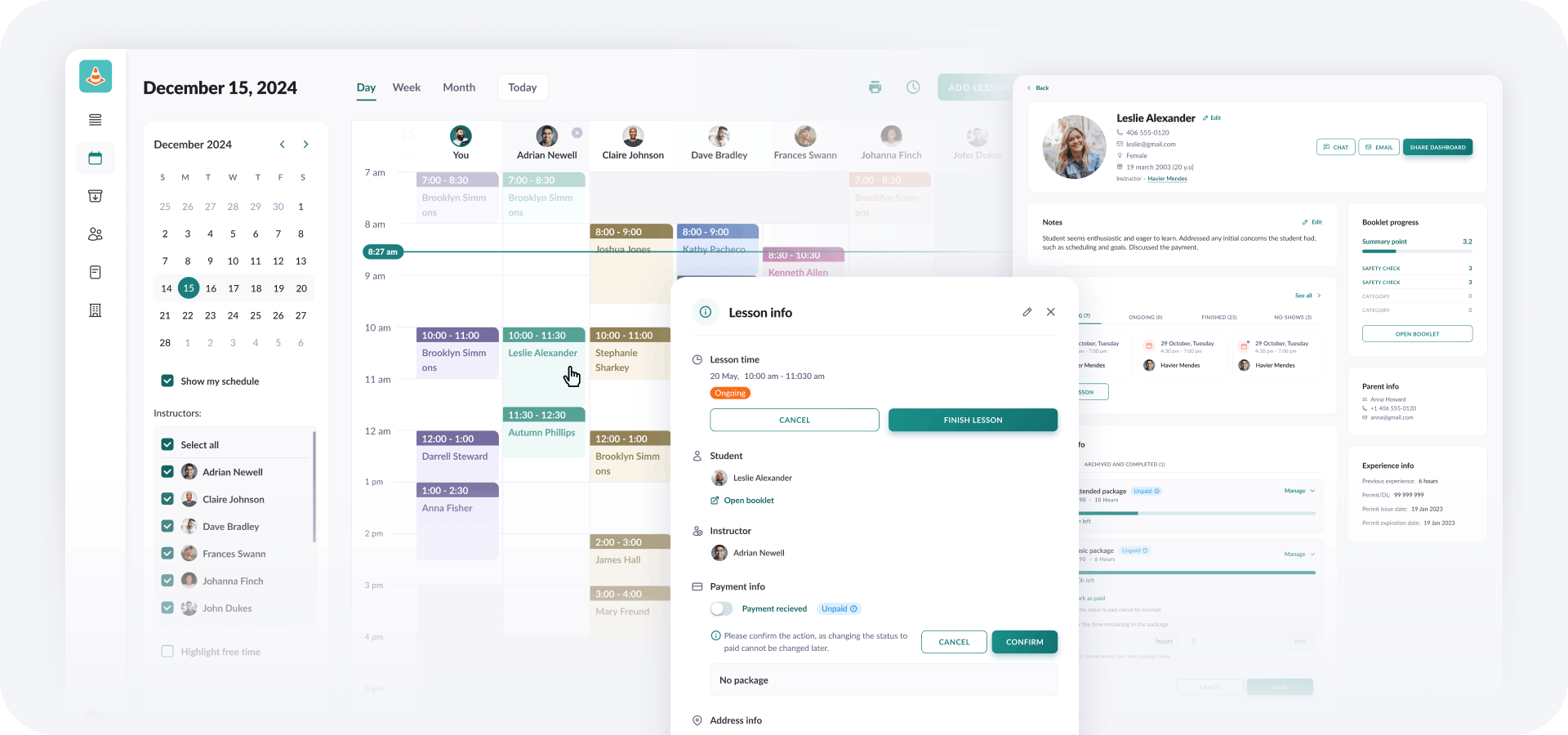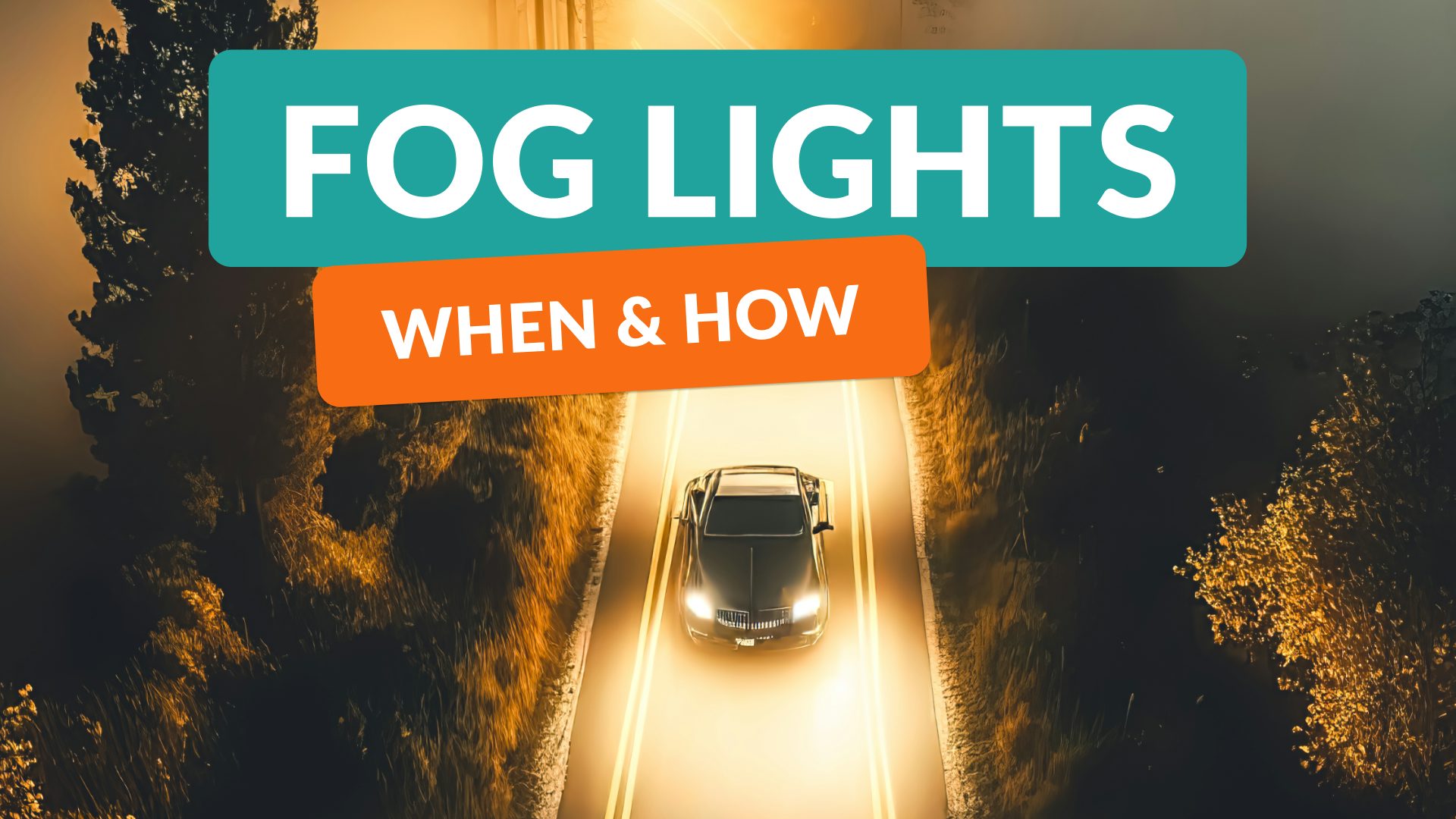
What are Fog Lights and When Should You Use Them?
This article covers:
- Fog lights definition and description
- How and when to use them
- When not to use them
What Are Fog Lights?
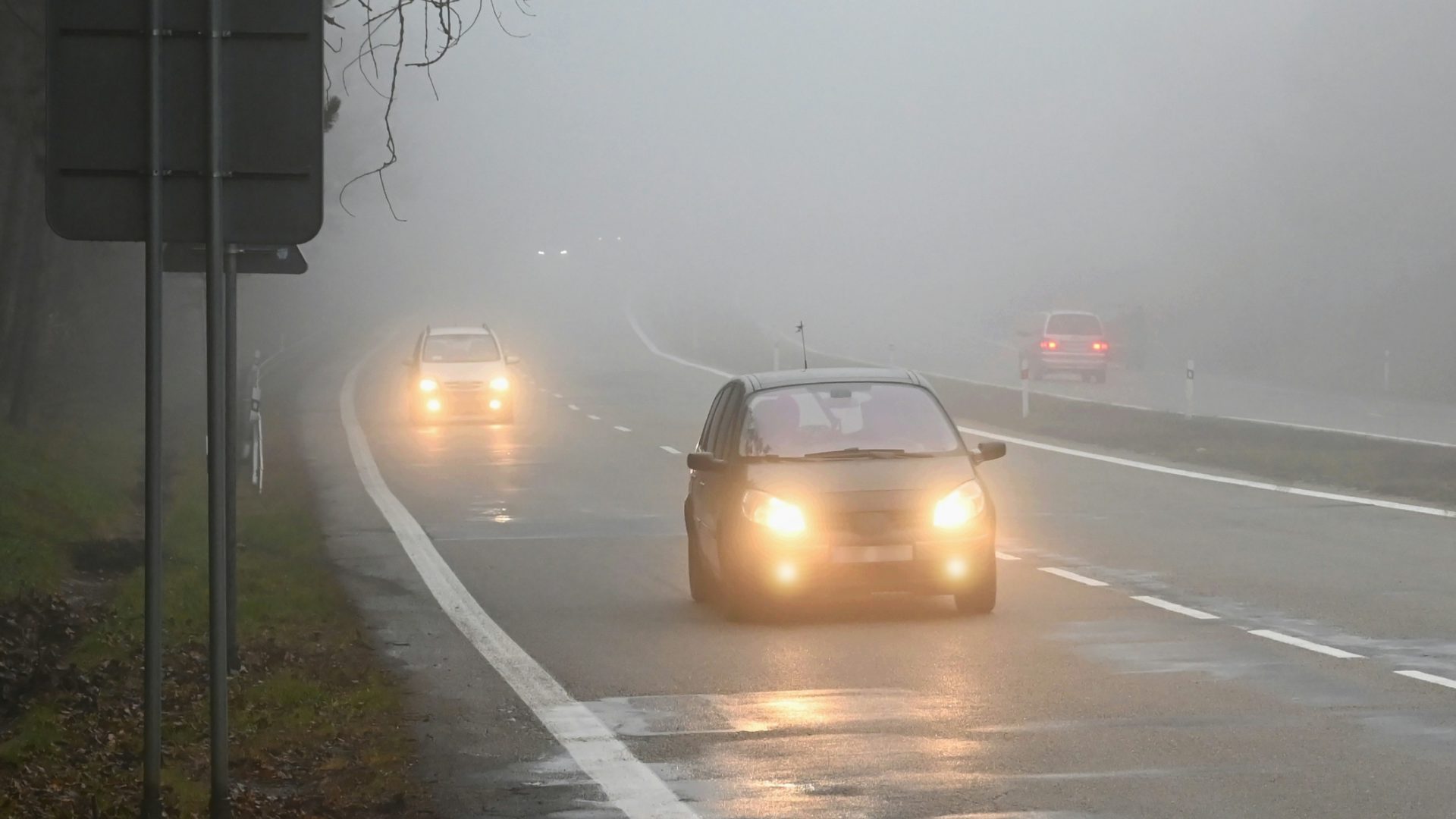
Fog lights are special car lights that improve visibility in foggy conditions. Their beam pattern cuts through the fog without causing glare, helping you see the road better. They have two types: front fog lights and rear fog lights.
| Front Fog Lights | Rear Fog Lights |
|---|---|
| Positioned low on the front, near the bumper, they produce a low, wide, and flat beam. Typically round or oval, fog lights emit a penetrating yellow or white light. | Located at the back of the vehicle, they emit a red light, usually as bright as your brake lights. Use them only in dense fog because they can be glaring to drivers behind. |
Do All Cars Have Fog Lights?
Fog lights aren’t included with all cars. Luxury cars usually have them, but they might be optional or not included in basic models. You can often upgrade your car to add fog lights.
Difference Between Fog Lights and Normal Headlights
Normal headlights are mandatory on all vehicles. They sit higher on the car front and cast a focused, long-range beam, ideal for night driving and low-light situations but not for fog. Unlike fog lights, drivers must use normal headlights in most driving conditions.
How to Use Fog Lights?
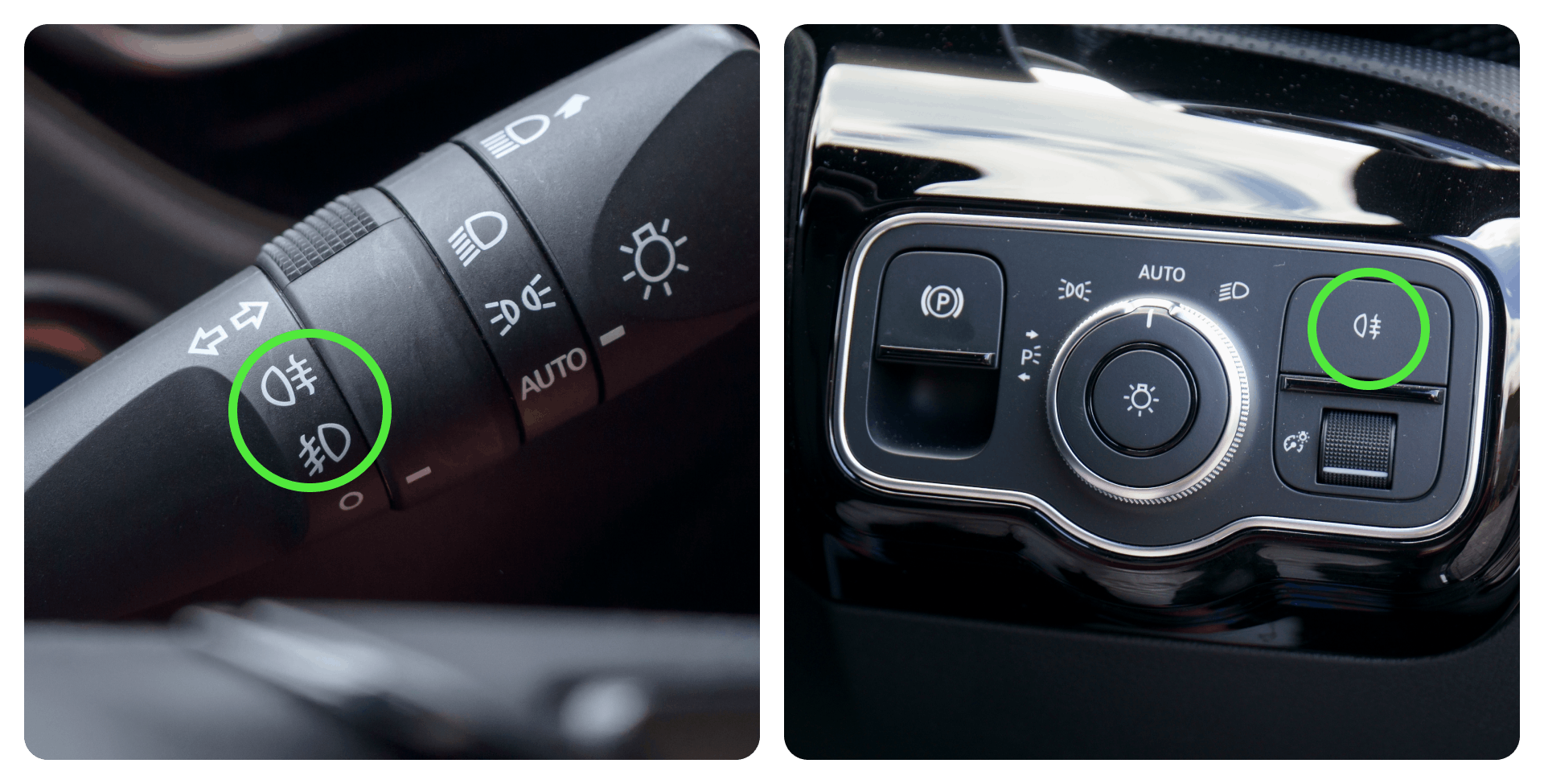
Look for the fog lights switch on the headlight control stalk (next to the steering wheel) or on the dashboard. It’s a symbol of a lamp with horizontal lines. Push or twist the switch to activate the fog lights.
Using Fog Lights
When to Use Fog Lights
- Heavy Fog: Ideal for penetrating thick fog that regular headlights can’t.
- Dense Mist: Helps in illuminating the road when mist obscures visibility.
- Severe Rainstorms: Useful in heavy rain where standard headlights struggle.
- Snowstorms: In regions where it’s legal, they can aid during heavy snowfall.
- Dust Storms: In arid areas, they can help navigate through dust clouds.
Note that using low or high-beam lights in these situations can make visibility worse as their positioning makes light reflect back toward the driver.
Daytime vs. Nighttime Usage
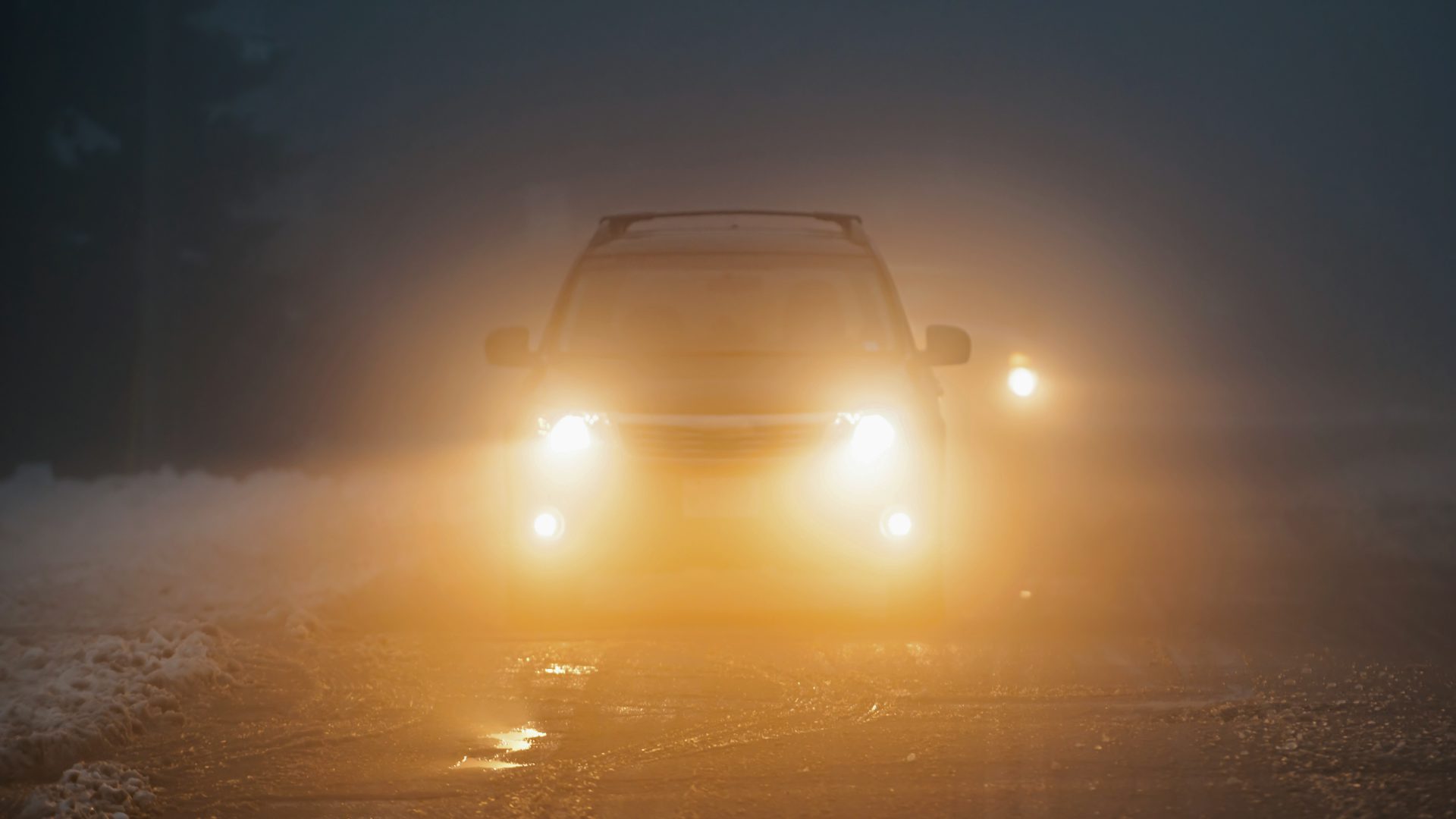
- Daytime: Turn on fog lights during any of the above conditions to make your car more visible and improve your road view.
- Nighttime: Use them together with regular headlights. They shouldn’t replace your main headlights, as their beam pattern is designed to work with the broader reach of standard headlights.
When NOT to Use Fog Lights
- Moderate to Heavy Rain: Regular headlights are more effective, fog lights can reflect off the rain.
- Snowy Conditions: Fog lights can reflect off the snow, worsening visibility.
- High Speeds: Fog lights are unnecessary due to their short-range illumination.
- Curvy or Hilly Roads: Fog lights can blind oncoming drivers on bends or hills due to their angle.
- When Overtaking: Fog lights can dazzle the driver you are overtaking, especially in dim conditions.
Do You Need to Have Fog Lights?
Fog lights are not mandatory but are extremely beneficial. So, if you have the option or can afford the upgrade, get them. Especially if you live in a climate where weather is unpredictable. The lights will allow you to drive at any time without fear of reduced visibility.
Drive Confidently in Fog with Zutobi
Learn when and how to use fog lights effectively with Zutobi. Our app offers game-like theory lessons and a practical behind-the-wheel video course, teaching you safe driving techniques, including foggy conditions. Join Zutobi now for mastering safe driving in all weathers.

Avoid beginner mistakes with expert advice
Build road test confidence and reduce anxiety
Make at-home lessons a success with our parent guide
Recommended articles
Ace your DMV test, guaranteed
Want to Be the Top School in Your Area?
- Simple & automated admin
- More time for teaching
- #1 learning materials for students

